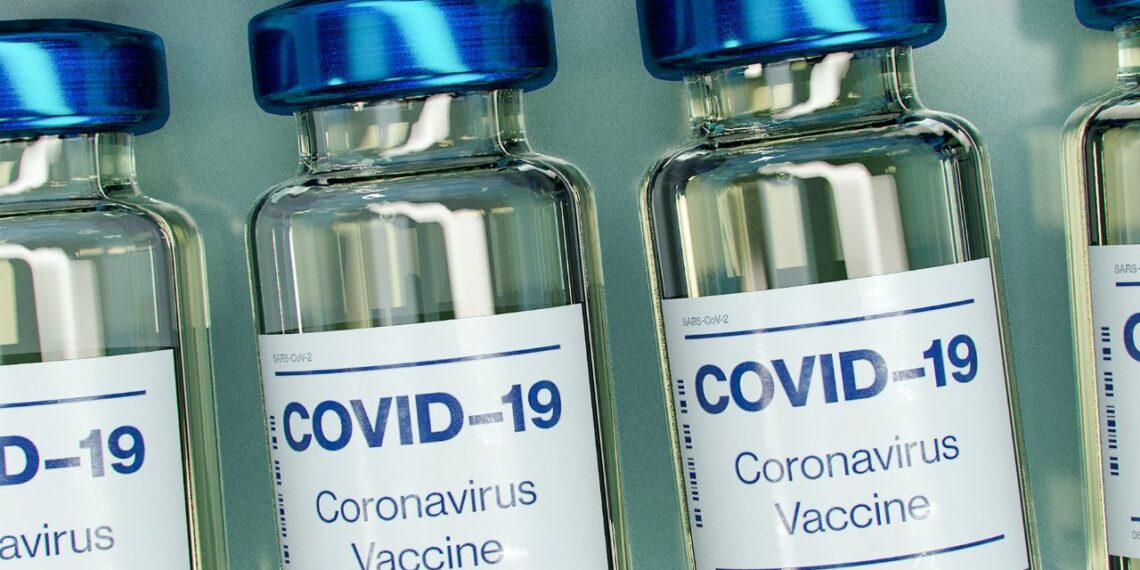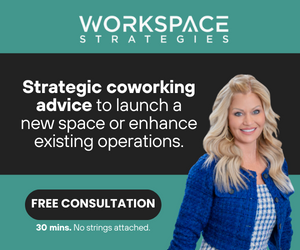- To reduce employee fears about returning to the office, encouraging everyone to get the new booster is an excellent strategy.
- Employees and leaders receiving booster shots helps benefit company bottom lines by reducing sick days, addressing worker resistance to coming to the office, minimizing PR fiascos, and helping executives be on the front lines of stakeholder capitalism.
- According to Edelman’s trust barometer, business leaders are trusted more than the government, nonprofits, or media. 86 percent of respondents to the trust barometer expect CEOs to speak out on issues such as pandemic impact, among others.
With a triple pandemic of COVID, flu, and RSV hitting the U.S. hard this winter and resulting in an explosion of cases, business executives need to take the lead on promoting the newly updated, Omicron-specific boosters. Doing so will help reduce the number of sick days taken by their workers, minimize COVID outbreaks and superspreader events in their companies, reduce employee fears about returning to the office, and position executives as trustworthy participants in stakeholder capitalism.
Research shows that the new boosters from Pfizer and Moderna, which are bivalent — meaning they target both Omicron and the original COVID strain — are very safe, similar to current vaccines. They are also more effective than previous vaccines against the Omicron variants, which are prevalent in the U.S. and elsewhere around the globe.
The boosters are widely available, and price is not an issue: the federal government purchased plenty of doses to give away for free to anyone approved to get one. They’re authorized for anyone over the age of 12. The Centers for Disease Control and Prevention (CDC) Director Rochelle Walensky stated “there is no bad time to get your COVID-19 booster and I strongly encourage you to receive it.”
Unfortunately, these recommendations are largely falling on deaf ears. Only 7.6 million Americans received the new booster in September, the first month it became widely available.
The reason for low uptake stems from vaccine hesitancy and lack of knowledge. According to a Kaiser Family Foundation survey, less than a third intend to get the new boosters. This low number is not surprising, given an Ipsos poll showing that 65 percent believe there is a small or no risk in returning to their normal, pre-COVID life.
That belief would not be a problem if we didn’t have hundreds of COVID-related deaths per day right now, and many additional deaths from flu and RSV as part of the triple pandemic.
Moreover, the University of Washington’s Institute for Health Metrics and Evaluation projects a new wave of COVID in the winter that could more than quadruple the current infection rate, which aligns with projections of a major winter wave by the FDA.
The consequences for executives and their teams can be dire. We have known since early 2022 that, according to a CDC study, the original vaccine’s effectiveness against Omicron fades quickly. Thus, those who received two doses of Moderna or Pfizer have 71 percent less likelihood of being hospitalized with COVID compared to non-vaccinated people within the first month of getting the shots. But that effectiveness fades relatively quickly to 58 percent after four months, and continues falling off after that. Someone who received the original two doses and then a booster gets protection of 91 percent against hospitalization immediately. Effectiveness falls to 78 percent after four months.
Boosters Help Keep Your Staff Working
By now, it’s been many months since either the original vaccine series or the booster shots for the vast majority of Americans. That makes them seriously vulnerable to COVID — especially the most experienced, senior staff at companies, whose age likely puts them in a high-risk category.
The immediate danger of staff members being out for several weeks in a hospital, or even dying, is just part of the problem. We can’t forget about the threat of long COVID, meaning long-term symptoms of COVID infection. These symptoms can range from fatigue and brain fog to sudden heart failure and strokes in otherwise healthy young and middle-aged people.
A CDC survey from June 2022 shows that 7.5 percent of Americans report having long COVID symptoms, defined as symptoms lasting three or more months after first contracting the virus. A study by the University of Southern California finds that 23 percent of those who get sick with COVID are likely to get long COVID symptoms.
Per a study published in The Lancet, 22 percent of those who had long Covid symptoms were unable to work, and another 45 percent needed reduced hours. The Brookings Institution evaluated these numbers to find that long COVID is keeping anywhere from 2 to 4 million Americans out of the labor force. No wonder we’re experiencing such labor shortages!
Nobody wants their staff — or themselves — to become part of these statistics. Yet what are executives doing about it? Not much.
That’s despite serious recent outbreaks at major companies that mandated office returns, such as at Google or at CalPERS, the $441.9 billion California Public Employees’ Retirement System.
By failing to take action, they are falling into the omission bias. This term refers to a dangerous judgment error — a cognitive bias — that downplays the costs of inaction in our minds.
In fact, some are taking steps in the opposite direction in their desperation to drive staff to the office. For example, Goldman Sachs lifted vaccination requirements everywhere except in areas that have government vaccine mandates for being in the office.
What executives should be thinking about is the long-term consequences for their companies of failing to encourage new booster shots. Given the data, we can confidently state that the more employees get shots, the less sick days they will take. It will also lower the chance that staff will have to permanently reduce their hours or even withdraw from the labor force.
Similarly, advocating for boosters will minimize COVID outbreaks in a company. Doing so avoids the bad PR from such outbreaks, as well as the decreased morale afflicting staff, when companies are trying to have their staff return to the office, as Google, CalPERS, and others have discovered.
Calling For A Return To The Office Is Easier
On a related note, to reduce employee fears about returning to the office, encouraging everyone to get the new booster is an excellent strategy. Whether a company pursues a flexible, team-led model in returning to the office as I encourage my clients to do, or a more rigid, top-down approach, many employees have fears around COVID.
An internal survey my company just completed for a Fortune 500 SaaS company showed that 64 percent of respondents felt somewhat concerned about COVID in the office. That aligns with broader surveys, such as one by Ipsos in September showing that 57 percent of those surveyed feel somewhat concerned about COVID.
Booster Shots Demonstrate Dedication To Stakeholder Wellbeing
Last, but far from least, comes the crucial role for executives to serve as trustworthy exemplars of what the Business Roundtable calls the new purpose of companies: stakeholder capitalism. A critical aspect of stakeholder capitalism involves “supporting the communities in which we work.” And there’s little doubt that reducing COVID among company employees supports broader community health and wellbeing.
According to Edelman’s trust barometer, business leaders are trusted more than the government, nonprofits, or media. 86 percent of respondents to the trust barometer expect CEOs to speak out on issues such as pandemic impact, among others. This trust and expectation makes it only more urgent for executives who wish to be on the front line of stakeholder capitalism to speak out in favor of the new boosters.
Educate, Incentivize, and Gamify To Promote Participation
So what should executives do? Mandates are certainly not the right way to go, given that we are transitioning from the emergency of the pandemic into a more endemic stage of learning to live with the virus. A much better approach is creating appropriate norms and nudging employees to engage in win-win behaviors using behavioral science-based approaches.
To create appropriate norms, executives need to both publicly advocate for the new boosters and get the shot themselves. The CEO at one of my client organizations wrote up a blog post for an internal company newsletter about the benefit of getting the bivalent booster, accompanied by a photo of himself getting the jab. She also strongly encouraged her C-suite and mid-level managers to get the booster and discuss doing so with their team members.
The company also brought in a well-respected epidemiologist to talk about the benefits of getting a bivalent vaccine booster, who answered questions and addressed concerns among staff.
To nudge employees, this company offered paid time off for getting the shot, along with sick leave for any side effects. It also created a competition between different teams within the organization. Team members could submit anonymized proof of their shots, and the first three teams to have all their members get shots got treated to an all-expense-paid weekend getaway. The company offered the same prize through a lottery for five employees across the organization who got the booster within the first three months it became available.
Other companies I work with adopted similar techniques to developing norms and nudging employees, customized to their own needs. Such approaches help create a context that encourages, without forcing, employees to protect their own health, and those of others, through getting the shot.
Doing so helps benefit company bottom lines by reducing sick days, addressing worker resistance to coming to the office, minimizing PR fiascos, and helping executives be on the front lines of stakeholder capitalism.

 Dr. Gleb Tsipursky – The Office Whisperer
Dr. Gleb Tsipursky – The Office Whisperer Cat Johnson – Coworking Marketing Maven
Cat Johnson – Coworking Marketing Maven Angela Howard – Culture Expert
Angela Howard – Culture Expert Drew Jones – Design & Innovation
Drew Jones – Design & Innovation Andrea Pirrotti-Dranchak – Competitive Advantage
Andrea Pirrotti-Dranchak – Competitive Advantage Jonathan Price – CRE & Flex Expert
Jonathan Price – CRE & Flex Expert Jeremy Fennema – Tech Innovation Alchemist
Jeremy Fennema – Tech Innovation Alchemist






